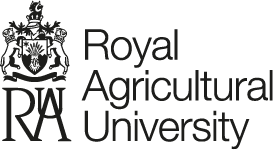The effects of providing a plant extract or a high intensity sweetener in the drinking water on the welfare and performance of weanling pigs
Watson, K and Blackie, N (2013) The effects of providing a plant extract or a high intensity sweetener in the drinking water on the welfare and performance of weanling pigs. In: Innovation from Animal Science-A necessity, not an option, April 2013, Liverpool.
|
Text
BSAS_2013_-_Proceedings.pdf - Published Version Available under License Creative Commons Attribution Non-commercial No Derivatives. Download (6MB) |
Abstract
Introduction The separation of piglets from the dam at weaning is associated with stress related behaviours including low levels of voluntary feed and water intake resulting in weight loss and growth check. (Lalles et al., 2007). As feed intake is partly dependent on water intake it has been suggested that the reduced liquid intake may be responsible for the growth check occurring at weaning (Dybkjaer, 2006). Therefore, encouraging young pigs to drink more may help improve digestibility and stimulate feed consumption. Plant extracts (PE) and high intensity sweeteners (HIS) have been shown to stimulate appetite and to improve welfare and performance parameters in weanling pigs (Manzanilla et al., 2004; Sterk et al., 2008). Limited data is available on the relationship between flavoured water intake and feed intake. Therefore the aim of the present study was to measure the effects of providing a HIS or a PE in the drinking water during the first week postweaning on piglet weight gain, faecal consistency and salivary cortisol. Material and methods 106 piglets of mixed breeds from 10 litters were weaned at 28 days ± 0.686 (± s.e.d.). A second replicate was conducted with 88 piglets from 10 litters weaned at 28 days ± 0.64 (± s.e.d.) in order to increase confidence in the results. At weaning litters were mixed and piglets were divided into 12 groups balanced for weight and sex and breed. Groups were randomly allocated to 1 of 3 dietary treatments (n=4). Treatments were control (plain water), Sucram™ (water + HIS) and Xtract™ (water + bioactive PE) (Pancosma, Geneva, Switzerland). Each group was provided with a cube drinker containing the treatments, water from nipple drinkers and a piglet starter diet (Vito Start 225™, BOCM Pauls, Wherstead, Ipswich, United Kingdom) which were offered ad libitum. The water in the cube drinkers was changed twice a day (AM/PM) and refusals were measured. Feed refusals were measured 3 days post-weaning and 7 days post-weaning. Piglets were weighed 3 days post- weaning, 7 days post-weaning (n=194) and then weekly until they left the grower house at an average weight of 45 kg (n=106). Saliva samples were collected from a random selection of individuals (n=30) on the day prior to and post weaning by oral insertion of cotton buds. Samples were frozen and salivary cortisol concentrations were analysed using a commercial kit (Parameter™ Cortisol, R&D Systems, Abingdon, UK). Faecal scores were recorded twice daily (AM/PM) using a 4-point scale. Piglets were housed indoors on slatted floors under monitored temperatures. Statistical analyses were carried using Genstat (Version 14.1, Lawes Agricultural Trust). Feed intakes, water intakes weight gain and differences in cortisol levels the day before and after weaning were analysed using an analysis of variance (ANOVA). A paired t-test was used to analyse overall cortisol levels of individual treatments. A Kruskall-Wallis nonparametric ANOVA was used to analyse faecal scores. Correlation analysis was performed to determine the relationship between water and feed intake. Results There was a high correlation between water and feed intake over all treatments (P < 0.01). Although no statistical differences between treatments in terms of water and feed intake were detected (P > 0.05), Table 1 shows intakes were similar in piglets offered a PE or a HIS compared to control. Piglets offered PE gained more weight from day 4-7 than piglets in the control groups (Table 1). With regards to long-term performance there was an overall tendency for differences between treatments (P= 0.09). Piglets offered HIS were heavier compared to piglets in the control group in week 7 (P < 0.05) and week 9 (P < 0.05). Piglets offered the PE did not show higher salivary cortisol levels the day after weaning than the day before weaning (P > 0.05), compared to the other groups and presented lower faecal scores on day 2, 3, 4 (P < 0.01) and 7 (P < 0.05) Conclusion The correlation between water and feed intake supports the assumption that feed intake at weaning could be increased by encouraging water intake. A positive impact on weight gain, indicates that the observed differences in feed and water intake may be of biological significance. Therefore offering these supplements may be an effective way of improving welfare and performance at weaning.
| Item Type: | Conference or Workshop Item (Other) |
|---|---|
| Divisions: | Agriculture, Science and Practice |
| Depositing User: | Dr Katharina Watson |
| Date Deposited: | 04 Apr 2025 12:42 |
| Last Modified: | 04 Apr 2025 12:42 |
| URI: | https://rau.repository.guildhe.ac.uk/id/eprint/16943 |
Actions (login required)
 |
Edit Item |

